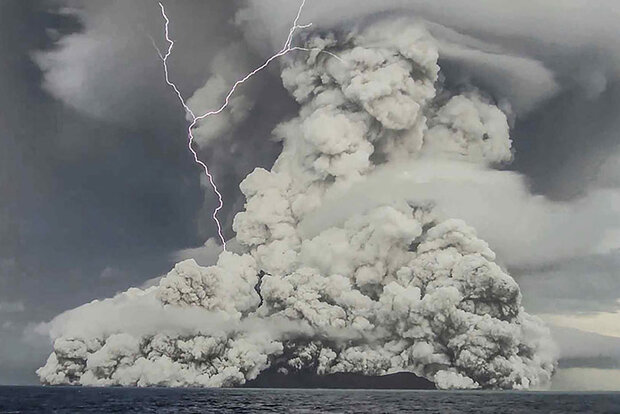Evaluating the impact of volcanic eruptions in Tropical Pacific climate models

The massive Hunga Tonga eruption in January 2022 sparked its own lightning and started a tsunami. Credit: NOAA Chemical Sciences Laboratory

The massive Hunga Tonga eruption in January 2022 sparked its own lightning and started a tsunami. Credit: NOAA Chemical Sciences Laboratory
Large volcanic eruptions inject sulfur gases into the atmosphere, which have short and long term impacts on the atmosphere, ocean, land, sea ice, and other parts of Earth’s climate. One of the most prominent effects is atmospheric cooling, but this can be hard to isolate from other climate trends like El Niño–Southern Oscillation (ENSO). Humans also have a relatively limited record of true large volcanic events, because any observations taken with instruments only extend back to about 1850. When it comes to future predictions and models, it remains largely unknown how volcanic eruptions interact with other climate variability trends. A new study, partially supported by the Climate Program Office’s Climate Variability & Predictability (CVP) Program, isolates the impact of volcanic eruptions from 1954 to 2015 by using a model of the tropical Pacific region to create climate conditions and then comparing the results to actual observations from those years.